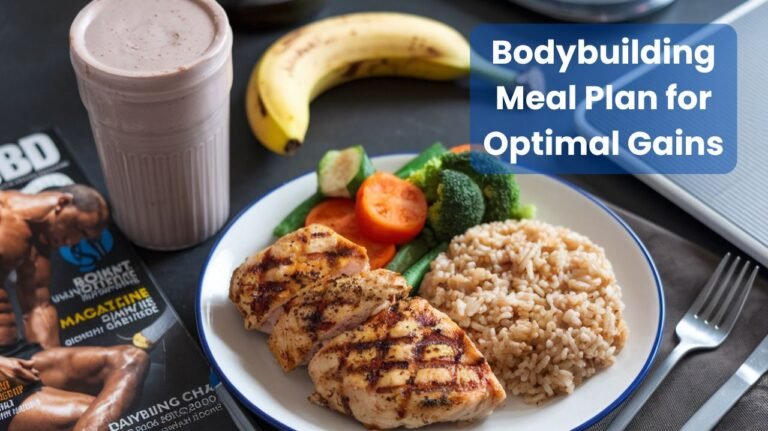What Are The Best Muscle Groups to Workout Together
For anyone diving into the world of fitness and strength training, understanding how to pair muscle groups effectively can make the difference between seeing great results and spinning your wheels in the gym.
Creating the right workout splits not only maximizes muscle growth and recovery but also helps maintain a sustainable and enjoyable fitness routine.
👉 Boost in Focus and Energy to Help Increase Pumps and Performance
👉 Increase Gains, Promote Muscle Growth and Boost Energy
👉 Powerful Muscle Growth, Increased Blood Flow, and Enhanced Pumps
👉 Bulk-Up, Increase Gains, And Improve Recovery
Understanding Muscle Groups and Their Functions
Before diving into the best combinations, it’s important to understand the major muscle groups and their primary functions:
- Chest (Pectorals): Pushing and bringing arms together
- Back (Latissimus Dorsi): Pulling and posture
- Shoulders (Deltoids): Arm rotation and elevation
- Arms (Biceps and Triceps): Arm flexion and extension
- Legs (Quadriceps, Hamstrings, Calves): Lower body movement
- Core (Abdominals and Lower Back): Stability and posture
Most Effective Muscle Group Combinations
Push/Pull/Legs Split
One of the most popular and effective ways to group muscles is the Push/Pull/Legs split. This approach divides workouts based on movement patterns rather than just muscle groups.
Push Day
- Chest
- Front and Middle Deltoids
- Triceps
Pull Day
- Back
- Rear Deltoids
- Biceps
- Forearms
Legs Day
- Quadriceps
- Hamstrings
- Calves
- Glutes
Upper/Lower Body Split
Another effective approach is the upper/lower split, which works well for those who can only train 3-4 days per week.
Upper Body Day
- Chest
- Back
- Shoulders
- Arms
Lower Body Day
- Quadriceps
- Hamstrings
- Calves
- Glutes
- Core
Optimal Training Frequency Table
| Split Type | Training Days | Rest Days | Frequency Per Muscle Group |
|---|---|---|---|
| Push/Pull/Legs | 6 | 1 | 2x per week |
| Upper/Lower | 4 | 3 | 2x per week |
| Full Body | 3 | 4 | 3x per week |
| Body Part Split | 5-6 | 1-2 | 1x per week |
Benefits of Strategic Muscle Group Pairing
Enhanced Recovery
When muscle groups are paired appropriately, one muscle group can recover while another is being trained. This approach:
- Prevents overtraining
- Allows for adequate rest between sessions
- Promotes better muscle growth
- Reduces injury risk
Time Efficiency
Smart muscle group pairing can lead to more efficient workouts by:
- Minimizing time spent in the gym
- Maintaining elevated heart rate
- Allowing for super-setting exercises
- Maximizing energy expenditure
Better Mind-Muscle Connection
Working complementary muscle groups together helps develop:
- Improved coordination
- Better exercise form
- Enhanced muscle activation
- More effective workouts
Alternative Muscle Group Combinations
Full Body Workouts
Ideal for beginners or those with limited time, full-body workouts can be performed 2-3 times per week. Key points include:
- Focus on compound movements
- Balance between pushing and pulling
- Include both upper and lower body exercises
- Emphasize proper form and control
Body Part Split
A more traditional approach that dedicates entire sessions to individual muscle groups:
- Monday: Chest
- Tuesday: Back
- Wednesday: Legs
- Thursday: Shoulders
- Friday: Arms
- Weekend: Rest
Factors to Consider When Choosing Your Split
Time Availability
- How many days can you commit to training?
- How long can each session last?
- What time of day do you prefer to train?
Training Experience
- Beginners may benefit more from full-body workouts
- Intermediate lifters often do well with upper/lower splits
- Advanced trainees might prefer more specialized splits
Recovery Capacity
- Age affects recovery time
- Sleep quality impacts recovery
- Nutrition plays a crucial role
- Stress levels affect recovery ability
Programming Tips for Success
Exercise Selection
When combining muscle groups, choose exercises that:
- Target multiple muscle groups efficiently
- Allow for progressive overload
- Feel comfortable and natural
- Match your equipment availability
Volume Management
- Start with 10-20 sets per muscle group per week
- Distribute volume across training days
- Adjust based on recovery and progress
- Include both compound and isolation exercises
Rest Periods
- Compound movements: 2-3 minutes rest
- Isolation exercises: 1-2 minutes rest
- Super-sets: 30-60 seconds between exercises
- Circuit training: Minimal rest between exercises
Common Mistakes to Avoid
Poor Exercise Order
- Don’t pre-exhaust muscles needed for compound lifts
- Avoid training the same muscle groups back-to-back
- Don’t neglect antagonist muscle balance
- Consider energy levels throughout the workout
Overtraining Small Muscle Groups
- Avoid excessive direct arm work
- Remember shoulders get worked during chest and back exercises
- Don’t overtrain core muscles
- Account for secondary muscle involvement
Progressive Implementation
For those new to strategic muscle group pairing, consider this approach:
- Start with full-body workouts to build a foundation
- Progress to upper/lower split as strength increases
- Consider push/pull/legs when more frequency is desired
- Adjust based on results and recovery
👉 Pack On Muscle Mass and Get Bigger and Stronger
👉 Burn Fat and Get Seriously Ripped
👉 Get Explosive Strength and Maximum Stamina
👉 Become A Gym Beast With Legal SARMs Alternatives
Conclusion
Pairing muscle groups effectively is crucial for maximizing workout efficiency and results. Whether choosing a push/pull/legs split, upper/lower division, or full-body approach, the key is consistency and proper execution.
Remember that the best split is one that fits your schedule, matches your recovery capacity, and helps you progress toward your fitness goals. Start with the basics, monitor your progress, and adjust as needed based on your body’s response and lifestyle demands.
Remember to listen to your body and make adjustments when necessary. The perfect workout split is highly individual and may require some experimentation to find what works best for you. Keep track of your progress, energy levels, and recovery to optimize your training program over time.







